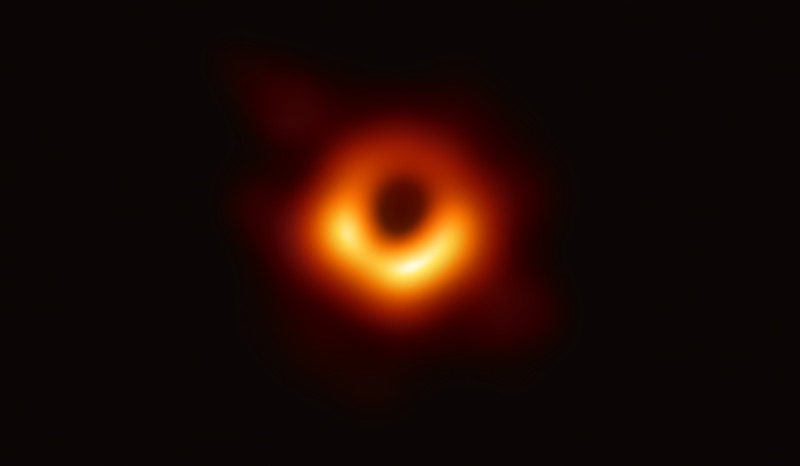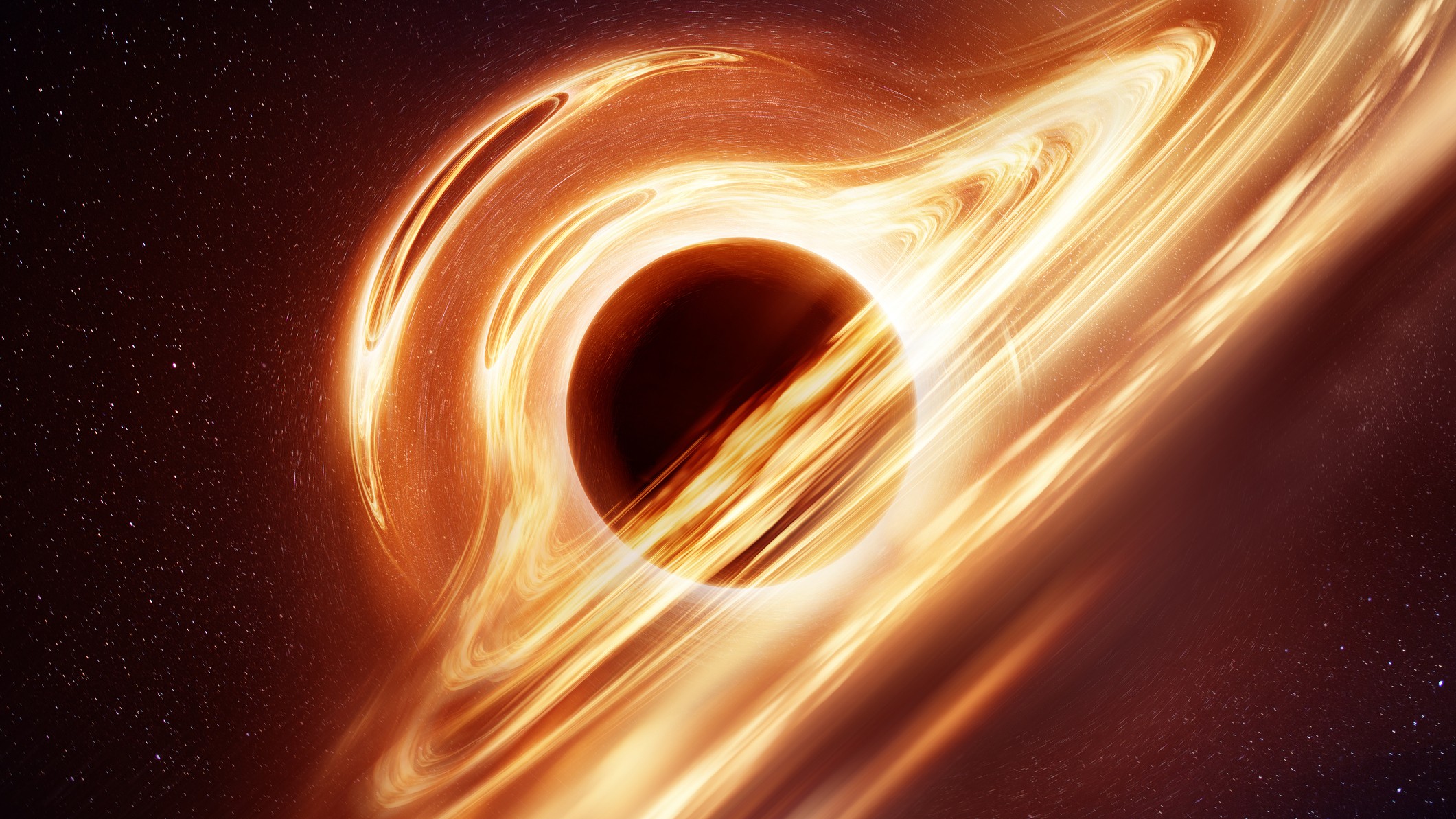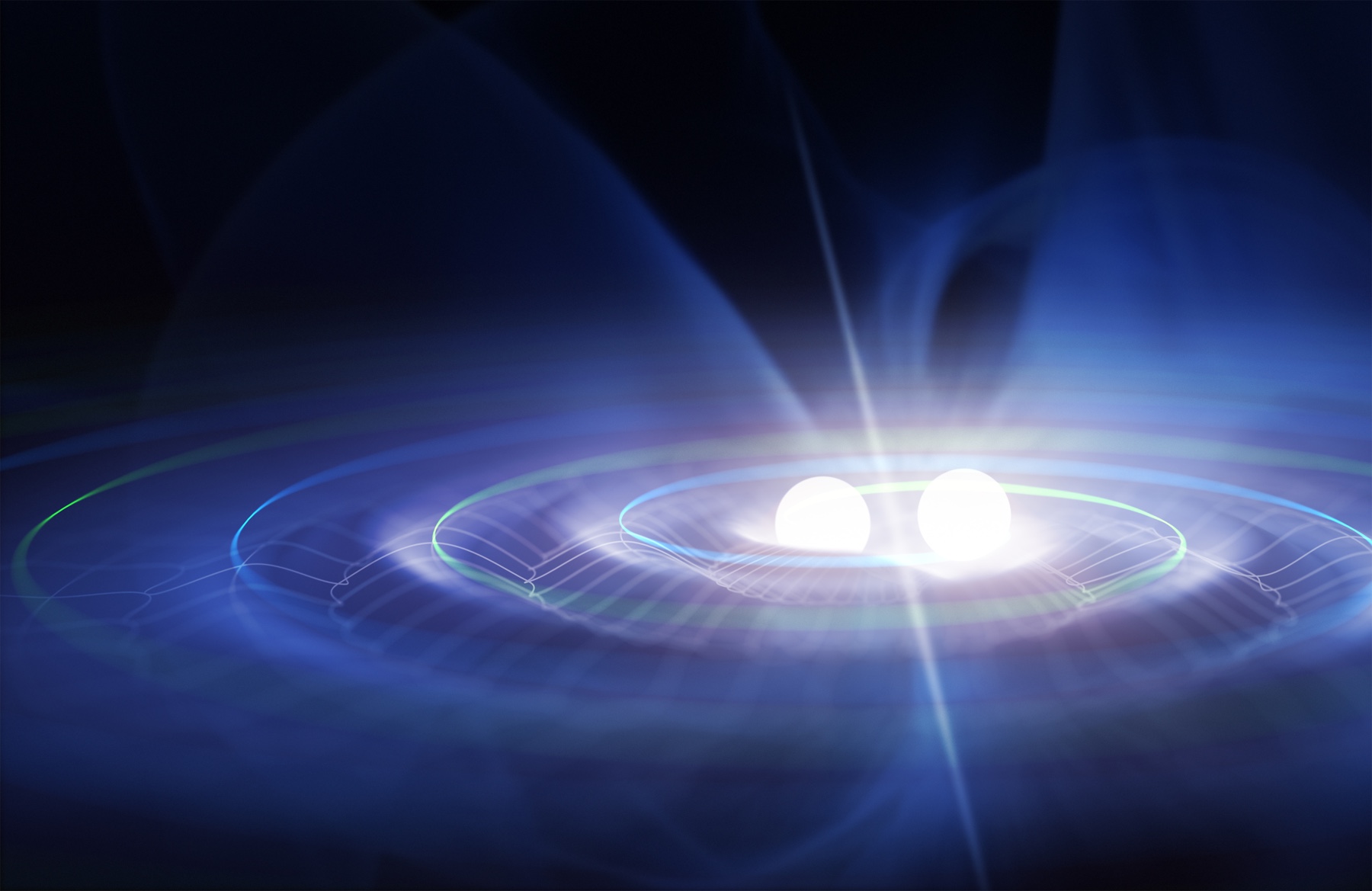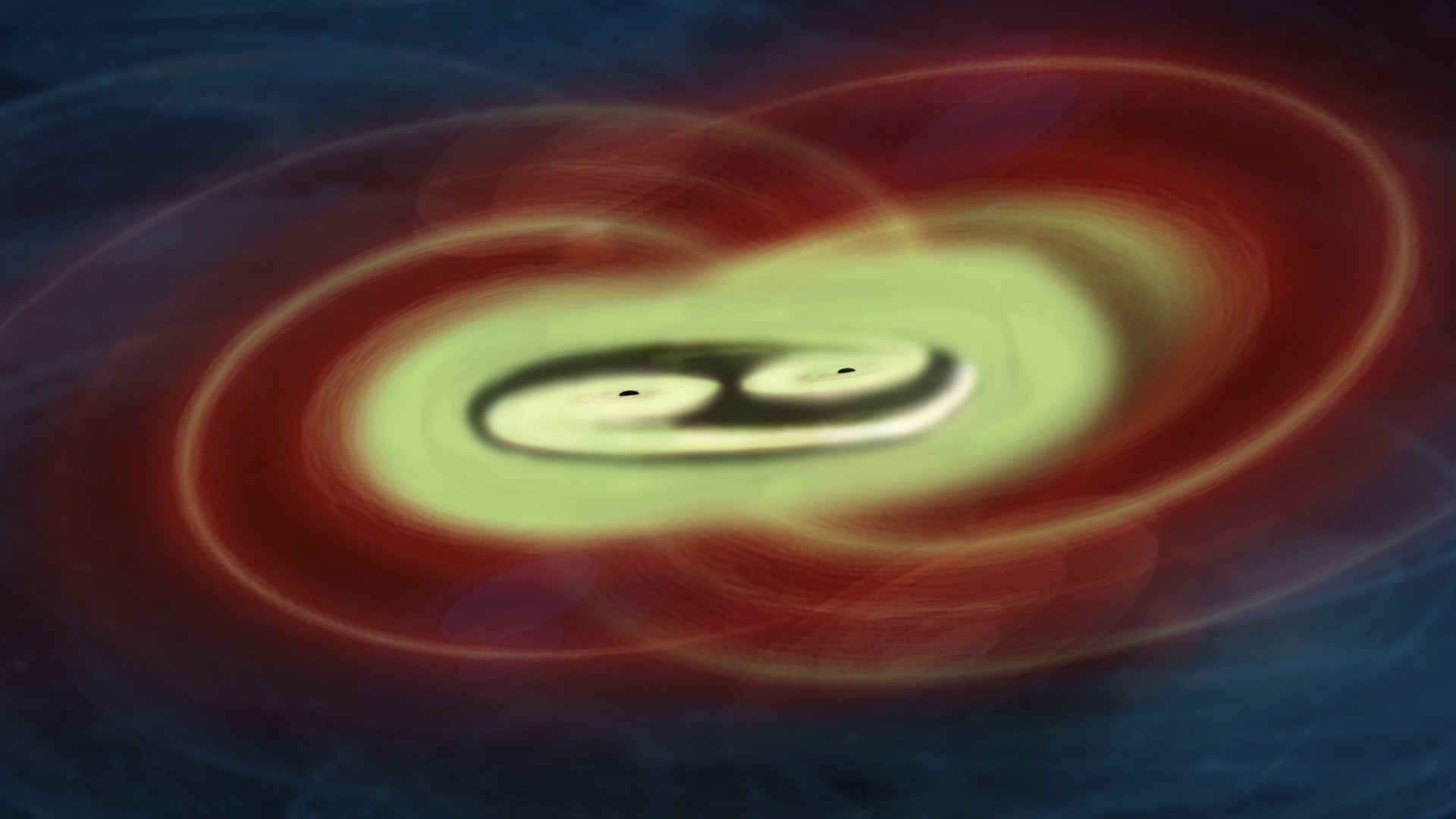10 discoveries that prove Einstein was right about the universe — and 1 that proves him wrong
Albert Einstein's theories of relativity have been proven to be true time and again in the more than 100 years following their publication.
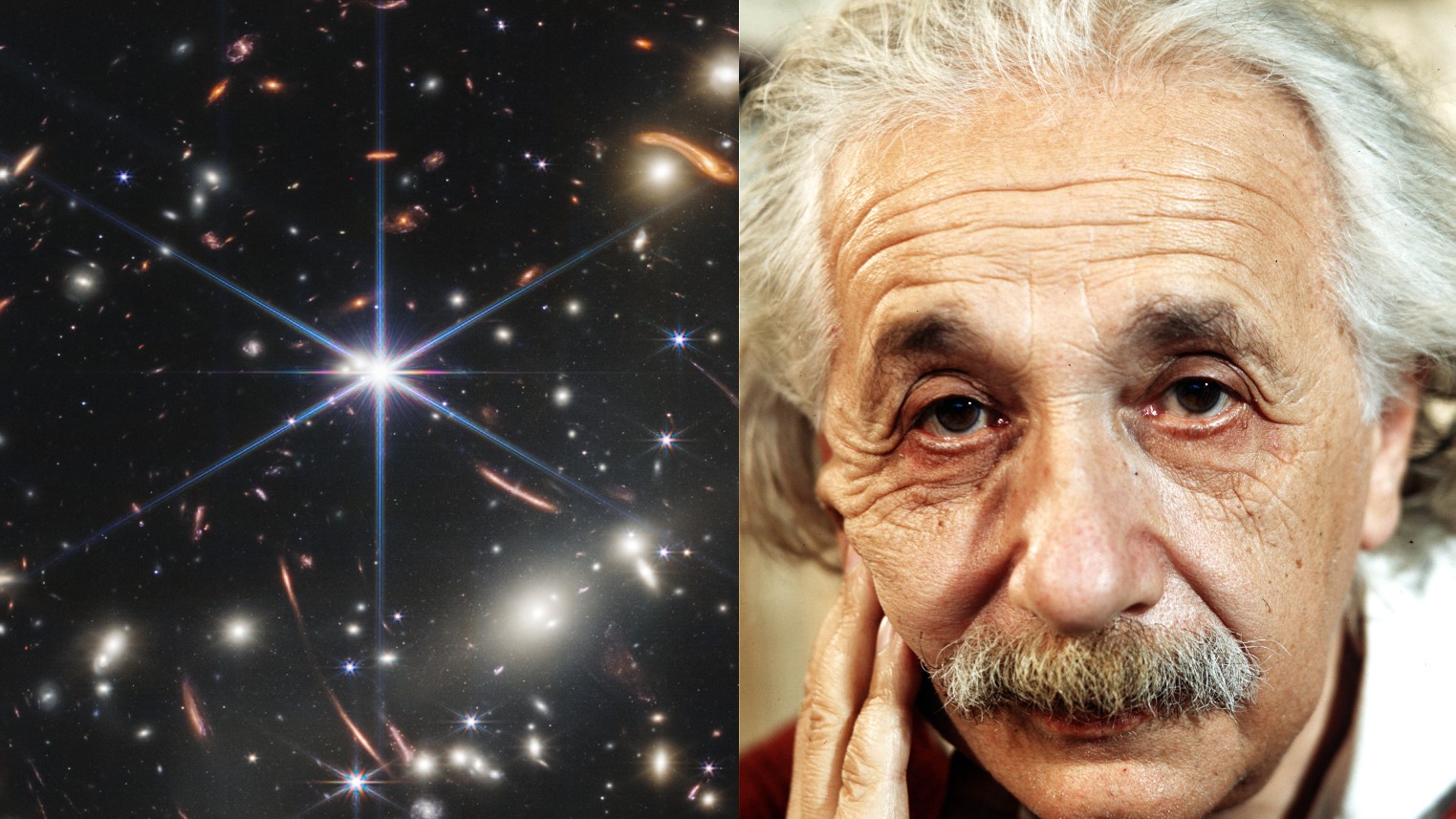
Legendary physicist Albert Einstein was a thinker ahead of his time. Born March 14, 1879, Einstein entered a world where the dwarf planet Pluto had yet to be discovered, and the idea of spaceflight was a distant dream. Despite the technical limitations of his time, Einstein published his famous theory of general relativity in 1915, which made predictions about the nature of the universe that would be proven accurate time and again for more than 100 years to come.
Here are 10 recent observations that proved Einstein was right about the nature of the cosmos a century ago — and one that proved him wrong.
1. The first image of a black hole
Einstein's theory of general relativity describes gravity as a consequence of the warping of space-time; basically, the more massive an object is, the more it will curve space-time and cause smaller objects to fall toward it. The theory also predicts the existence of black holes — massive objects that warp space-time so much that not even light can escape them.
When researchers using the Event Horizon Telescope (EHT) captured the first-ever image of a black hole, they proved Einstein was right about some very specific things — namely, that each black hole has a point of no return called an event horizon, which should be roughly circular and of a predictable size based on the mass of the black hole. The EHT's groundbreaking black hole image showed this prediction was exactly right.
2. Black hole 'echoes'
Astronomers proved Einstein's black hole theories correct yet again when they discovered a strange pattern of X-rays being emitted near a black hole 800 million light-years from Earth. In addition to the expected X-ray emissions flashing from the front of the black hole, the team also detected the predicted "luminous echoes" of X-ray light, which were emitted behind the black hole but still visible from Earth due to the way the black hole bent space-time around it.
3. Gravitational waves
Einstein's theory of relativity also describes enormous ripples in the fabric of space-time called gravitational waves. These waves result from mergers between the most massive objects in the universe, such as black holes and neutron stars. Using a special detector called the Laser Interferometer Gravitational-Wave Observatory (LIGO), physicists confirmed the existence of gravitational waves in 2015, and have continued to detect dozens of other examples of gravitational waves in the years since, proving Einstein right yet again.
4. Wobbly black hole partners
Studying gravitational waves can reveal the secrets of the massive, distant objects that released them. By studying the gravitational waves emitted by a pair of slowly colliding binary black holes in 2022, physicists confirmed that the massive objects wobbled — or precessed — in their orbits as they swirled ever closer to one another, just as Einstein predicted they should.
Get the world’s most fascinating discoveries delivered straight to your inbox.
5. A 'dancing' spirograph star
Scientists saw Einstein's theory of precession in action yet again after studying a star orbiting a supermassive black hole for 27 years. After completing two full orbits of the black hole, the star's orbit was seen to "dance" forward in a rosette pattern rather than moving in a fixed elliptical orbit. This movement confirmed Einstein's predictions about how an extremely small object should orbit around a comparatively gargantuan one.
6. A 'frame dragging' neutron star
It's not just black holes that bend space-time around them; the ultra-dense husks of dead stars can do it too. In 2020, physicists studied how a neutron star orbited around a white dwarf (two types of collapsed, dead stars) for the previous 20 years, finding a long-term drift in the way the two objects orbited each other. According to the researchers, this drift was likely caused by an effect called frame dragging; essentially, the white dwarf had tugged on space-time enough to slightly alter the neutron star's orbit over time. This, again, confirms predictions from Einstein's theory of relativity.
7. A gravitational magnifying glass
According to Einstein, if an object is sufficiently massive, it should bend space-time in such a way that distant light emitted behind the object will appear magnified (as seen from Earth). This effect is called gravitational lensing, and has been used extensively to hold a magnifying glass up to objects in the deep universe. Famously, the James Webb Space Telescope's first deep field image used the gravitational lensing effect of a galaxy cluster 4.6 billion light-years away to significantly magnify the light from galaxies more than 13 billion light-years away.
8. Put an Einstein ring on it
One form of gravitational lensing is so vivid that physicists couldn't help but put Einstein's name on it. When the light from a distant object is magnified into a perfect halo around a massive foreground object, scientists call it an "Einstein ring." These stunning objects exist all throughout space, and have been imaged by astronomers and citizen scientists alike.
9. The shifting universe
As light travels across the universe, its wavelength shifts and stretches in several different ways, known as redshift. The most famous type of redshift is due to the expansion of the universe. (Einstein proposed a number called the cosmological constant to account for this apparent expansion in his other equations). However, Einstein also predicted a type of "gravitational redshift," which occurs when light loses energy on its way out of a depression in space-time created by massive objects, such as galaxies. In 2011, a study of the light from hundreds of thousands of distant galaxies proved that gravitational redshift truly does exist, as Einstein suggested.
10. Atoms on the move
Einstein's theories also hold true in the quantum realm, it seems. Relativity suggests that the speed of light is constant in a vacuum, meaning that space should look the same from every direction. In 2015, researchers proved this effect is true even on the smallest scale, when they measured the energy of two electrons moving in different directions around an atom's nucleus. The energy difference between the electrons remained constant, no matter which direction they moved, confirming that piece of Einstein's theory.
11. Wrong about 'spooky action-at-a-distance?'
In a phenomenon called quantum entanglement, linked particles can seemingly communicate with each other across vast distances faster than the speed of light, and only "choose" a state to inhabit once they are measured. Einstein hated this phenomenon, famously deriding it as "spooky action-at-a-distance," and insisted that no influence can travel faster than light, and that objects have a state whether we measure them or not.
But in a massive, global experiment in which millions of entangled particles were measured around the world, researchers found that the particles seemed to only pick a state the moment they were measured, and no sooner.
"We showed that Einstein's world-view… in which things have properties whether or not you observe them, and no influence travels faster than light, cannot be true — at least one of those things must be false," study co-author Morgan Mitchell, a professor of quantum optics at the Institute of Photonic Sciences in Spain, told Live Science in 2018.

Brandon is the space / physics editor at Live Science. With more than 20 years of editorial experience, his writing has appeared in The Washington Post, Reader's Digest, CBS.com, the Richard Dawkins Foundation website and other outlets. He holds a bachelor's degree in creative writing from the University of Arizona, with minors in journalism and media arts. His interests include black holes, asteroids and comets, and the search for extraterrestrial life.
 Live Science Plus
Live Science Plus





